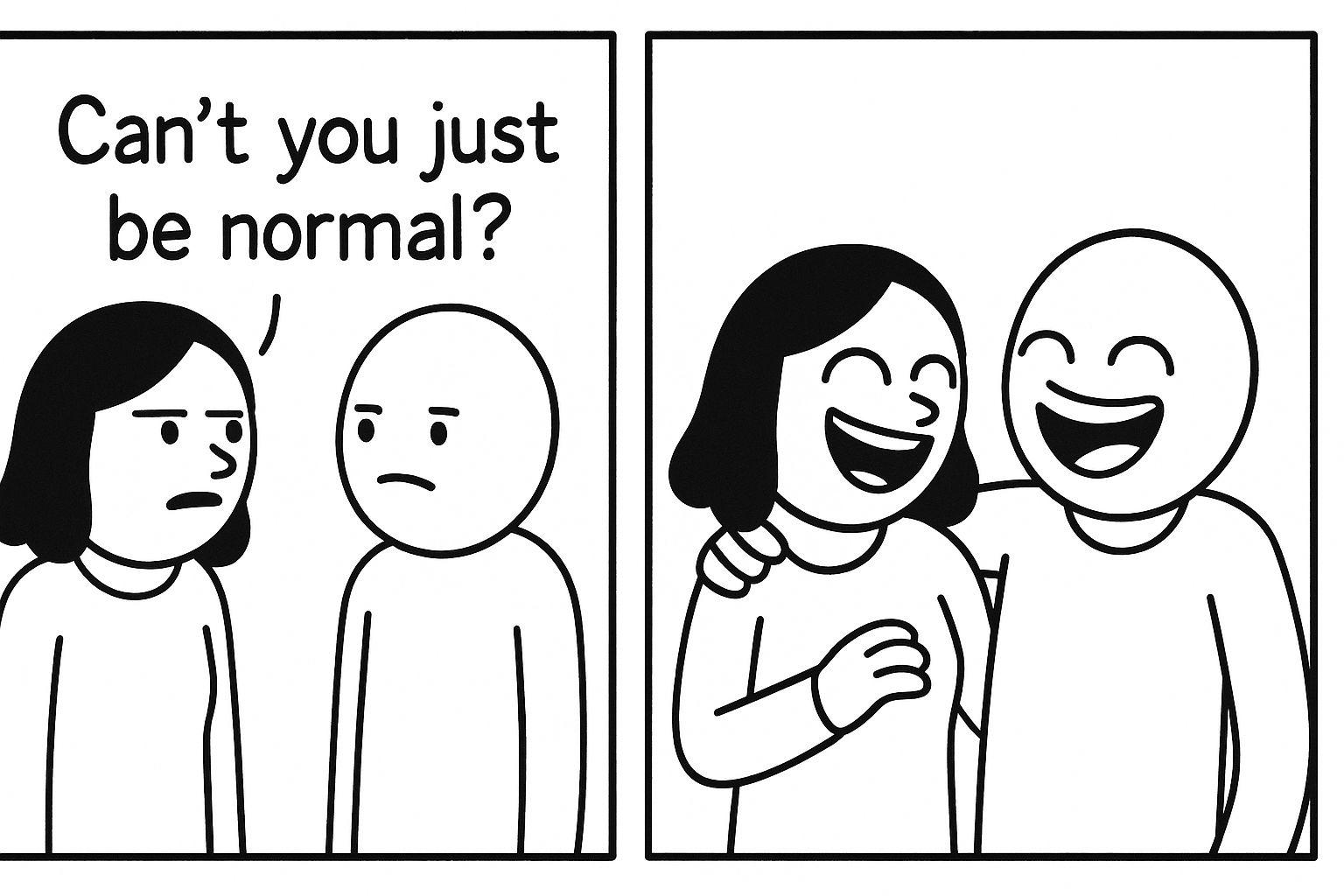Bad news y’all, but it’s not all bad news.
No, Instagram does not pay creators directly for views. But yes, people are still getting paid well by growing on Instagram and having large followings.
Even smaller creators with just a few followers are doing extremely well - stay tuned and I’ll give you all the insights into how they’re making it happen!
Unlike YouTube, where ad views generate income, Instagram offers other ways for creators to earn money. These include subscriptions, live badges, gifts on Reels, and bonuses. However, these tools require meeting specific eligibility criteria, such as follower count and account type.
The most reliable income sources on Instagram are brand partnerships, affiliate marketing, and selling products or services. Creators with smaller, engaged audiences often earn more than those with larger, inactive followings. Building trust and focusing on engagement is key to success.
My Biggest Takeaways after researchin’:
- In my opinion, the best way to monetize on Instagram is through community building through platforms like Skool.
- Instagram doesn’t pay per view but offers monetization tools like subscriptions and bonuses.
- Brand deals and affiliate marketing are major income sources for creators.
- Engagement matters more than follower count for long-term earnings.
Making money on Instagram requires a strategy focused on connecting with your audience and diversifying income streams.
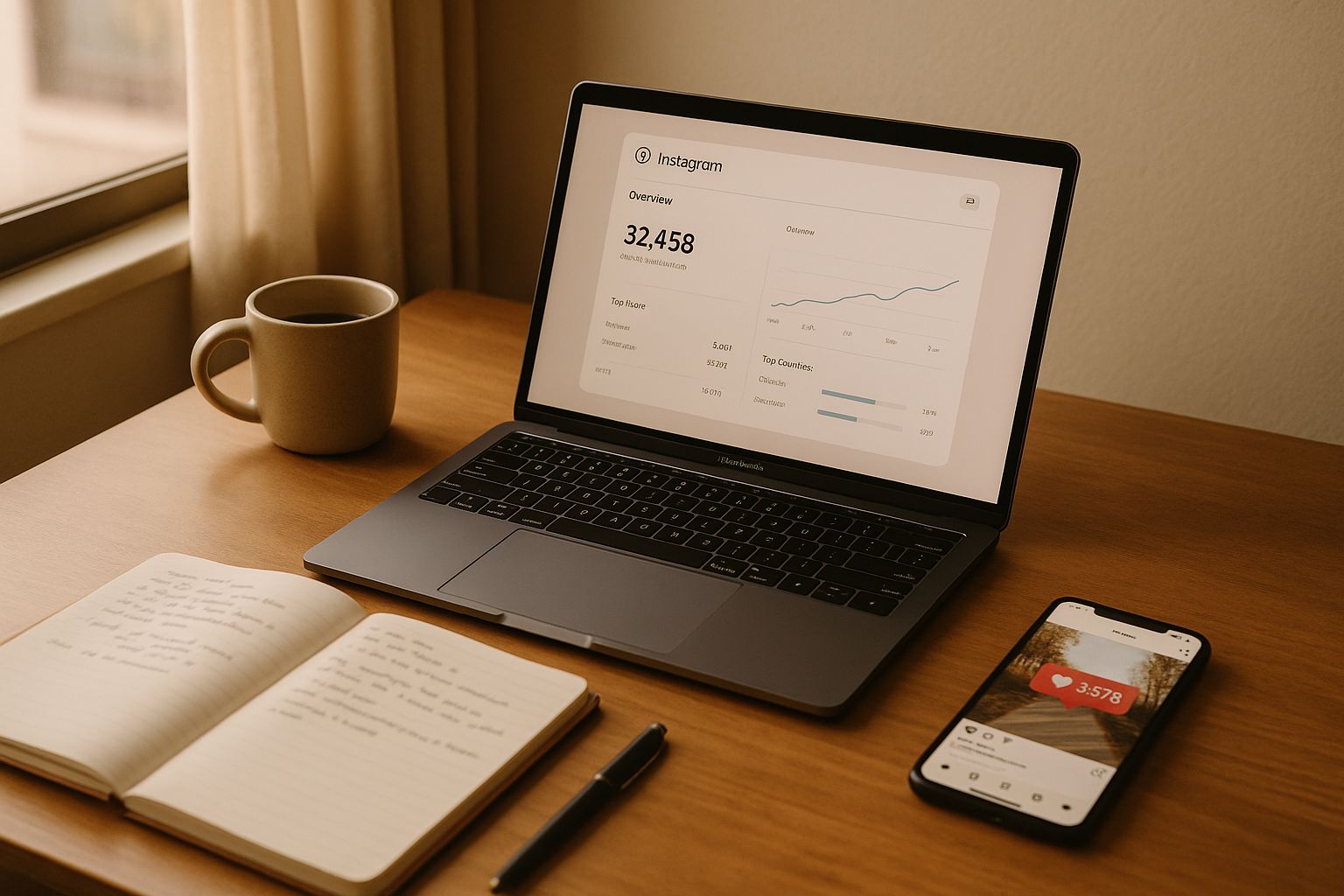
How Instagram Monetization Actually Works
Unlike platforms such as YouTube, Instagram doesn’t pay creators for views. On YouTube, creators earn a share of ad revenue based on how many people watch their content. Instagram, however, takes a different approach by focusing on tools that help creators make money through direct audience support and brand collaborations. Essentially, Instagram’s monetization model prioritizes community engagement over simple view counts.
This distinction is important because it shifts the way creators should think about building their presence on the platform. While views still matter for visibility and attracting brands, they’re not the direct source of income.
Instagram's Built-In Monetization Tools
Instagram provides several features that allow creators to earn money by connecting directly with their audience. These tools focus on fostering audience support rather than paying for views. Here’s a closer look:
- Subscriptions: Creators can offer exclusive content to paying followers, charging between $0.99 and $99.99 per month. For now, Instagram doesn’t take a commission on these earnings, but this is a limited-time policy. Subscriptions are often used for behind-the-scenes content, private Q&A sessions, or early access to posts.
- Badges in Live Videos: These function as virtual tips during live streams. Viewers can purchase badges for $0.99, $1.99, or $4.99, and Instagram currently doesn’t take a cut. Acknowledging badge purchasers during live sessions can significantly boost engagement and encourage more contributions.
- Gifts on Reels: Viewers can send virtual gifts while watching Reels. Unlike badges, Instagram does take a percentage of this revenue. Creating interactive and engaging content is key to maximizing this feature.
- Bonuses: These are exclusive programs where Instagram pays creators for specific activities, such as reaching certain view milestones. Access to bonuses depends on factors like location and account performance, and payouts can reach up to $1,200 per million views.
Each of these tools is designed to help creators build stronger connections with their audience while generating income.
Requirements and Limits for Instagram's Tools
Accessing Instagram’s monetization features isn’t automatic. Creators must meet specific requirements, which can vary depending on the tool:
- Subscriptions: To qualify, you need at least 10,000 followers, be at least 18 years old, and have a professional account. You must also comply with Instagram’s Partner Monetization and Community Standards and live in a country where subscriptions are available.
- Virtual Gifts: This feature has a lower entry barrier, requiring just 500 followers and a professional account. As with subscriptions, you must follow Instagram’s rules and maintain genuine engagement.
- Account Type: All monetization tools require either a Business or Creator account. If you’re still using a personal account, you’ll need to switch by navigating to your profile settings and selecting "Account type and tools".
- Content Restrictions: Accounts focusing on children or featuring content aimed primarily at kids may not qualify for certain monetization features.
- Geographic Limitations: Some tools, like Instagram Shopping, are only available in specific countries. Moving to an ineligible location could impact your monetization status.
Comparing Instagram's Monetization Options
To better understand how these tools stack up, here’s a comparison of their requirements and earning potential:
| Feature | Audience Requirement | Pricing Range | Instagram Commission |
|---|---|---|---|
| Subscriptions | 10,000+ followers | $0.99 - $99.99/month | None (limited time) |
| Live Badges | Professional account | $0.99 - $4.99 per badge | None |
| Reels Gifts | 500+ followers | Varies by gift type | Yes (percentage taken) |
| Bonuses | Invitation only | Up to $1,200+ per million views | None |
Currently from what I can see, Instagram is waiving commissions on subscriptions and badges to encourage creators to adopt these tools. However, this policy may change as the features become more established.
Potential Earnings from Bonuses
Bonus programs offer varying payouts depending on engagement levels and audience size. Here’s an example of what creators might earn:
| Views | Potential Earnings |
|---|---|
| 100,000 | $100 - $300 |
| 500,000 | $300 - $800 |
| 1,000,000 | $600 - $1,200 |
These figures highlight the variability in earning potential, as bonuses are not universally available and depend on several factors.
From my experience testing these tools, the key to success lies in treating them as opportunities to build stronger relationships with your audience. The creators who benefit the most are those who focus on engagement and connection, rather than simply viewing these features as revenue streams.
Income Beyond Instagram's Built-In Tools
Instagram's native monetization features are just the starting point. Many creators unlock greater earning potential by exploring revenue streams outside the platform's built-in tools. These external methods not only complement Instagram’s offerings but also provide creators with more control over their income.
Thing is, if you’re relying solely on Instagram to make money, you’re building on rented land. One algorithm change or a shadowban can instantly cut your reach, engagement, and income. That’s why the smartest creators are focused on something more stable: community.
And now it’s easier than ever.
Skool’s $9 Hobby Plan Is a Game-Changer
If you’ve been thinking about launching a private group, online course, or coaching space to serve your audience more deeply, Skool just made that much more accessible.
For only $9 per month, you get:
- A space where your Instagram followers can hang out, learn, and connect
- A platform that lets you launch a course, cohort, or membership without tech headaches
- Full access to Skool’s features, including courses, events, discussions, and integrations
- Unlimited members and unlimited courses, with just a 10% transaction fee
This isn’t a trial version. You get everything. The only things not included are a custom domain and the ability to hide suggested communities.
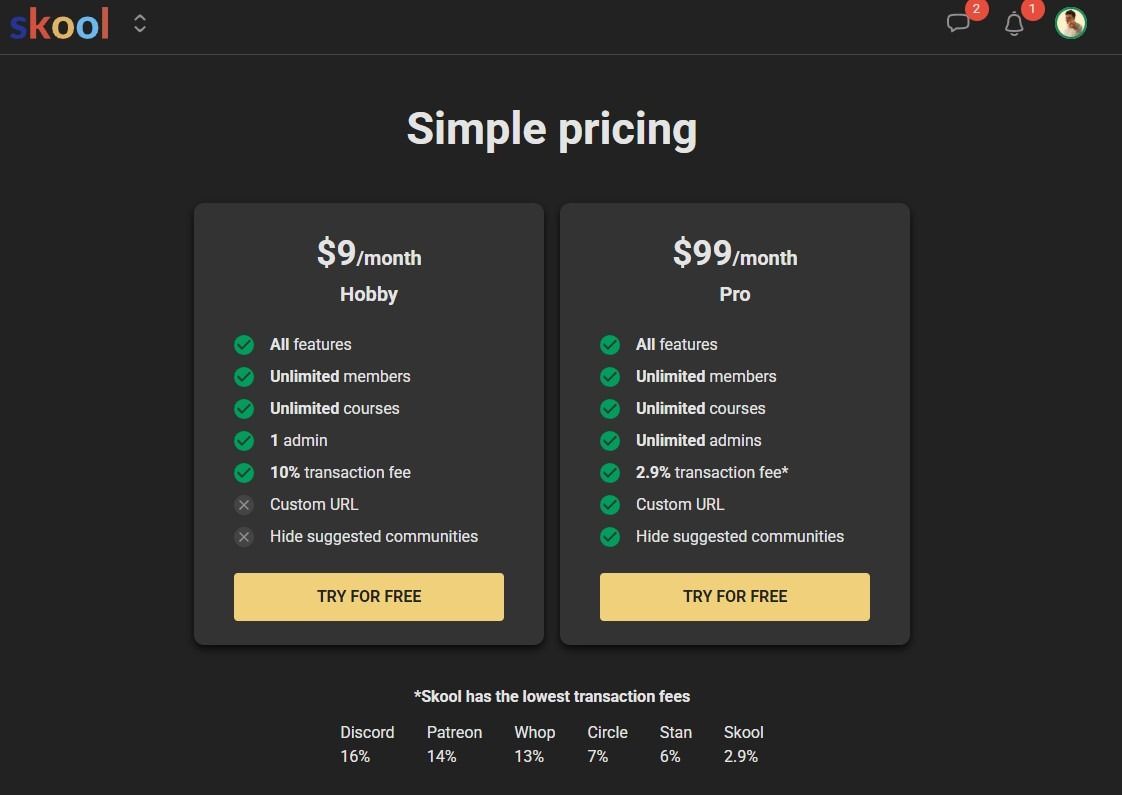
Why This Matters for Instagram Creators
Instagram is perfect for getting discovered. But Skool is where trust happens. It’s where your most loyal followers can become real clients, students, or collaborators. There is no algorithm there - your members see every single thing you post. It’s by far our favorite platform.
If you already monetize with:
- Coaching or consulting
- Templates or digital products
- Paid workshops or challenges
- Affiliate marketing
- Brand partnerships
Then launching a Skool community gives you a space to serve your audience directly, prove your engagement, and create deeper relationships.
One of the most overlooked opportunities is using Instagram to attract people, then sending them to a Skool community where you can actually build something lasting.
Brand Partnerships and Sponsored Content
Another one of the most rewarding ways to earn is through brand partnerships. Companies are increasingly drawn to creators with niche, engaged audiences rather than focusing solely on follower counts. These brands value authentic connections and seek creators whose followers align with their target market.
Here’s how it usually works: brands compensate creators for promotional content through different payment models. Some prefer flat fees for posts, while others opt for performance-based pay, rewarding creators based on metrics like clicks, conversions, or sales. Long-term ambassador programs are even more appealing, often combining recurring retainers with performance bonuses for added stability.
The secret to success in these partnerships? Authenticity. Creators who promote products they genuinely believe in not only maintain credibility with their audience but also build lasting relationships with brands.
Affiliate Marketing and Commissions
Affiliate marketing is another popular income stream, where creators earn commissions when followers purchase products using unique affiliate links. This method requires little upfront investment and offers scalable income opportunities.
As y’all can probably tell, I’m a big fan of the Skool platform. Communities there can also easily offer affiliate commissions on their groups, like one of my favorite communities The Vibe Marketers.
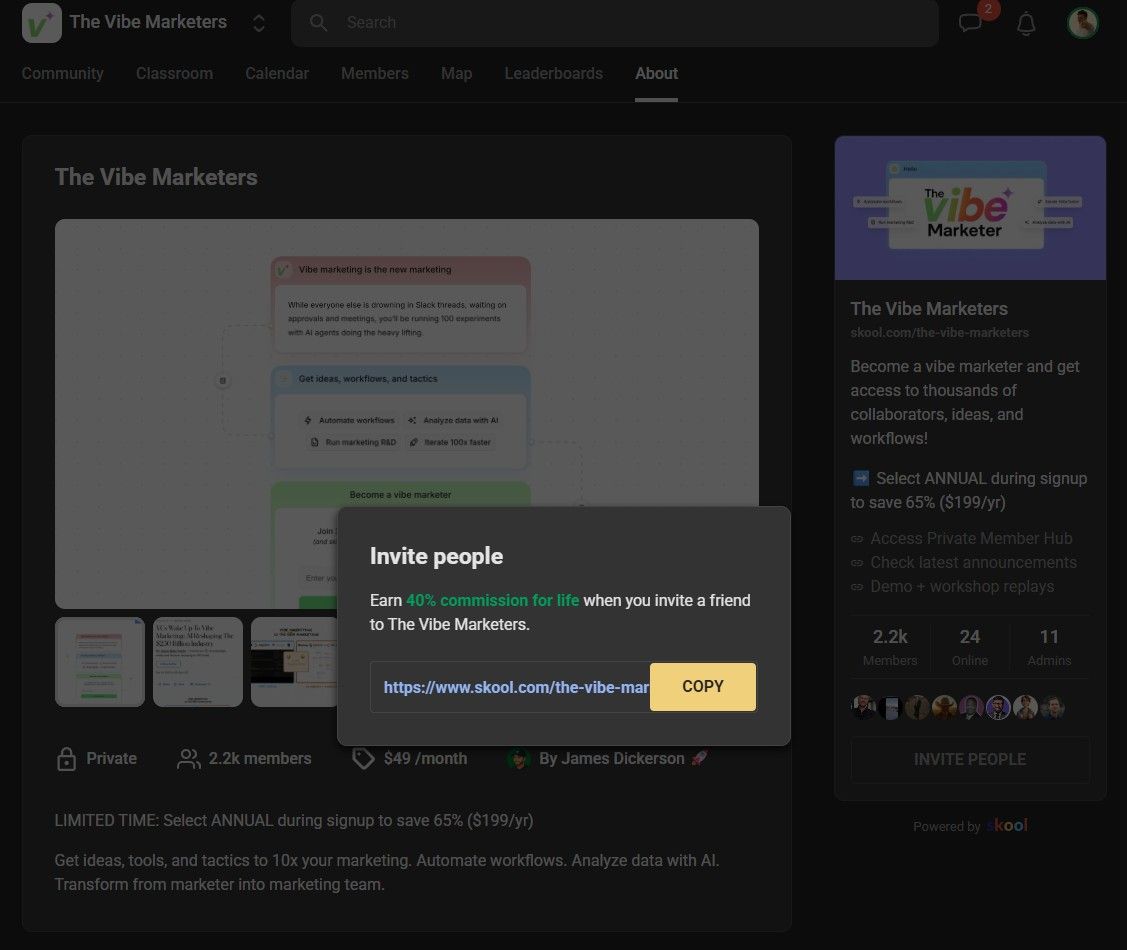
If you want to read more about my experience with James Dickerson’s community, check it out: https://www.proveworth.com/blog/top-4-resources-for-learning-vibe-marketing-from-scratch/
Now in general commission rates vary widely, typically ranging from 3% to 30%, depending on the product category. For example, Amazon’s affiliate program offers commissions of 1–10%, while some software companies and Skool communities provide recurring commissions of 20–50%.
The most successful affiliate marketers focus on products that naturally fit their content and audience. A fitness creator might recommend workout gear and supplements, while someone focused on productivity could highlight apps and organizational tools. When done thoughtfully, these promotions feel seamless and genuine.
Creators often share affiliate links in Instagram Stories (using the swipe-up feature available to accounts with over 10,000 followers) or in their bios through tools like Linktree. Consistent content creation and strategic link placement are crucial for maximizing affiliate income.
Selling Products and Services
For creators looking to take full control of their revenue, selling their own products, communities or services is a powerful option.
Physical merchandise, like custom apparel or art prints, is a great fit for creators with strong personal brands. Print-on-demand services make this approach easier by eliminating inventory risks. For instance, artist Adam Spychala effectively uses Instagram to drive followers to his online store, where he sells prints of his work through a print-on-demand model.
Digital products, such as e-books, templates, or online courses, are another attractive option. These require a one-time effort to create but can be sold repeatedly with minimal ongoing costs. Additionally, services like coaching, consulting, or workshops allow creators to monetize their expertise directly, with rates varying based on their niche and experience.
While this approach demands significant upfront effort in terms of creation, marketing, and customer support, the long-term benefits and sense of ownership make it worthwhile.
Effort vs. Income Potential
Different income streams require varying levels of effort and offer different rewards. Here’s a quick breakdown based on observations of successful creators:
| Method | Income Potential | Time Investment | Effort Required |
|---|---|---|---|
| Community Building | High (varies widely) | Medium-High | Marketing, delivery, retention |
| Brand Partnerships | High (varies widely) | Medium-High | Negotiation, content creation, reporting |
| Affiliate Marketing | Low-Medium (scalable) | Low-Medium | Content integration, link management |
| Selling Products/Services | Medium-High | High | Product development, fulfillment, support |
Community building offers the highest recurring earning potential with moderate effort, affiliate marketing provides scalable returns with less time investment, and selling products, brand partnerships or services demands more upfront work but delivers greater long-term control.
sbb-itb-494c2a9
How to Maximize Instagram Earnings
Making the most of Instagram as a source of income requires more than just posting content and hoping for the best. The creators who consistently earn well have mastered a few essential strategies that go beyond surface-level tactics.
Building Real Engagement
When it comes to earning on Instagram, the size of your audience isn’t the most important factor - engagement is. It’s not uncommon to see creators with just 5,000 highly engaged followers earning more than others with 50,000 passive ones. Brands have caught on to this, with the average engagement rate on Instagram sitting at 4.7%. They’re actively seeking creators who can meet or surpass this level.
True engagement goes beyond likes! Through my work with ProveWorth, I’ve noticed that creators who actively respond to comments, ask meaningful questions in their captions, and create content that encourages discussion tend to build stronger communities. This kind of interaction not only attracts loyal followers but also makes brands take notice… Because these audiences are more likely to trust recommendations and act on them.
Instagram Reels have become a standout format for boosting engagement. In 2024, Reels from influencers achieved an impressive engagement rate of 2.08%. Highlighting this in your pitches to brands can demonstrate your understanding of what drives results on the platform.
The secret to building engagement lies in authenticity. As influencer Sabir Peele puts it:
"It's more impactful to say, 'I love helping people feel great about themselves through clothing,' rather than saying, '[Insert name] is a style expert who has appeared on E! News.'”
By fostering genuine interactions, you not only strengthen your community but also set the stage for using data effectively to secure better brand partnerships.
Use Analytics for Better Partnerships
If you’re looking to land better brand deals, Instagram analytics can be your best friend. Surprisingly, many creators don’t fully tap into this resource, but those who do can negotiate higher rates and attract brands that align with their audience.
Instagram Insights provides valuable information about your audience, such as location, gender, and age range. Since most Instagram users fall between the ages of 18 and 34, this data can help you position yourself as a perfect fit for brands targeting that demographic.
Brands care about metrics that show your influence - engagement rates, reach, story completion rates, and click-through rates on trackable links. Even if you haven’t partnered with brands yet, experimenting with trackable links can help you demonstrate your potential impact for affiliate campaigns.
A polished media kit is another must-have. Include key details like audience demographics, engagement stats, and examples of past campaign results. Regularly updating your media kit ensures brands see an accurate and current picture of your reach and influence.
When sharing metrics with brands, focus on the numbers that matter most to them. This not only shows that you’re invested in their success but also increases the likelihood of securing long-term partnerships.
Diversify Your Income Streams
Relying on a single source of income can be risky, especially with platform algorithms and trends constantly changing. Successful creators protect themselves by diversifying their revenue streams.
The trick is finding the right mix for your brand. Many creators focus on a few major income sources, like sponsored content or affiliate marketing, while supplementing with smaller streams such as digital products or consulting work.
Digital products might take significant effort upfront but can scale over time, while consulting offers high revenue per client but isn’t as scalable. Community building and affiliate marketing, on the other hand, requires moderate effort and can generate passive income.
From my experience with ProveWorth, I’ve seen creators thrive by sticking to products and services they genuinely believe in. This approach not only builds trust with their audience but also ensures long-term income stability.
Lessons From My Own Experience
Looking back, I’ve learned that building a sustainable income on Instagram isn’t about quick wins - it’s about creating systems that work over time. Treating your Instagram presence like a business from day one is crucial.
This means consistently tracking metrics, maintaining professional relationships with brands, and delivering on promises. Reliability is just as important as creativity. But you also need a fantastic offer. Social followers aren’t engaged at all. You’ve got to get them off platform.
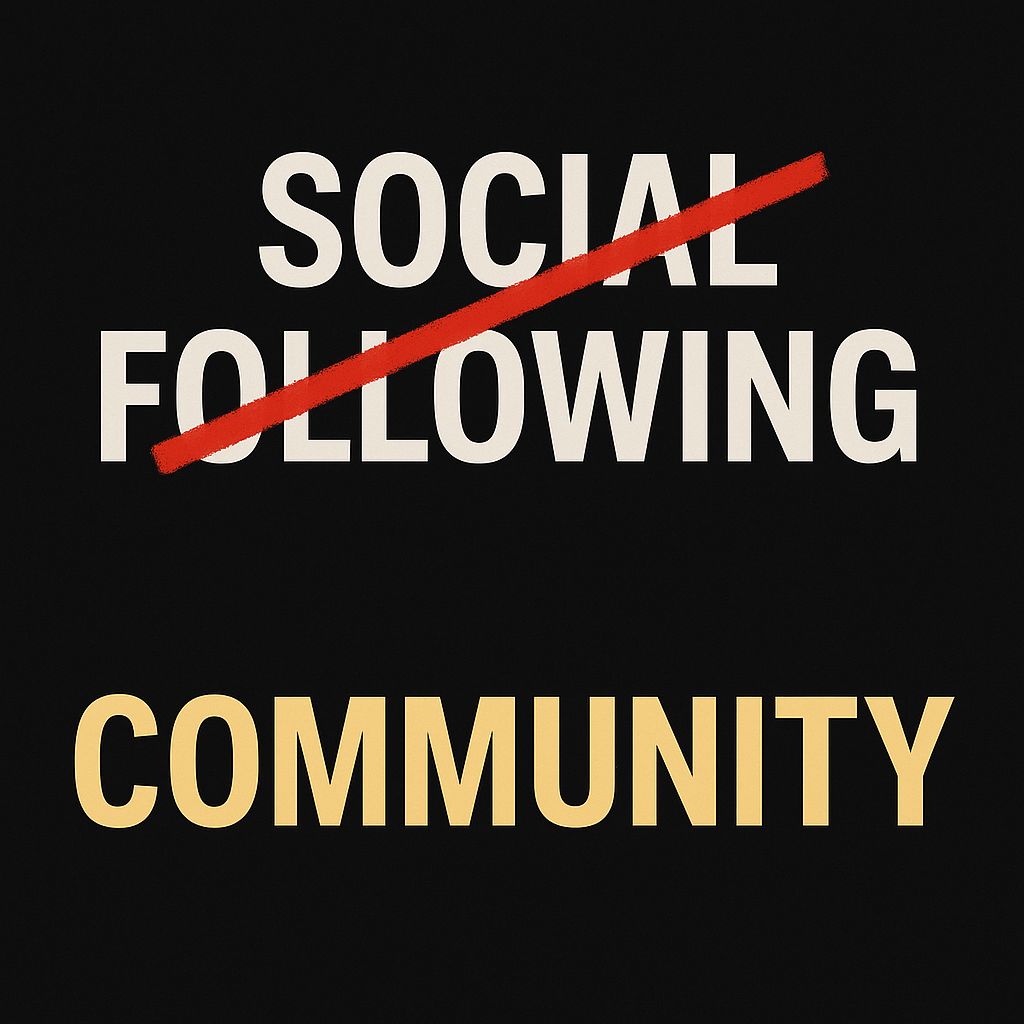
One of the biggest lessons I’ve taken away is the importance of community. The most successful creators don’t just post content; they create spaces where their audience feels valued and heard. These communities are more likely to support creators through purchases, recommendations, and long-term loyalty.
What has surprised me most is how much effort top creators put into understanding their audience. They don’t just rely on intuition - they analyze their analytics, gather feedback, and adapt their strategies accordingly. This mix of data-driven decisions and authentic relationship-building is the foundation of sustainable earnings on Instagram.
The Real Way Creators Earn on Instagram
Instagram doesn’t pay creators directly for views. If you’re serious about making money, the real opportunity lies in having a strong strategy.
After nearly a decade working with influencers for monday.com, I’ve noticed a common thread among successful creators - they focus on diversifying their income streams and building genuine connections with their audience. Instead of relying on payouts tied to views, they create multiple ways to earn that complement each other.
Here’s the surprising part: even creators with just 500 followers can start earning. The secret? Prioritizing engagement and authenticity over vanity metrics like follower count.
This flips the old belief that you need a massive audience to make money. In reality, brands are drawn to creators with engaged audiences, making genuine interaction far more valuable than sheer numbers. This shift also helps creators build a more stable income model in addition to Instagram’s monetization tools.
The creators who succeed long-term know how to leverage Instagram’s features while branching out into other opportunities, such as brand deals, affiliate marketing, or selling their own products and services. They treat their Instagram account as a central hub for their business, not just a place to post content.
One major mindset shift I’ve seen drive success is moving away from “How do I get more views?” to asking, “How can I better serve my community?” This change naturally leads to stronger engagement, deeper brand partnerships, and more opportunities for recurring income through things like subscriptions, courses, or exclusive content.
The numbers back this up. With 2 billion monthly active users on Instagram, the platform rewards creators who prioritize authentic interactions over chasing views. Building trust and credibility with your audience has become far more important than going viral.
At ProveWorth, I’ve learned that long-term income comes from focusing on transformation, integrity, and nurturing a healthy community. The most successful creators understand that their audience’s trust is their most valuable asset. They protect it by being selective with brand partnerships and consistently delivering value.
Ultimately, this approach - centered on community and diversified income - takes more work upfront. But it’s the foundation for sustainable success that doesn’t depend on algorithms or sudden platform changes. It’s a strategy that pays off in the long run.
FAQs
Does Instagram pay you for views?
Not directly. Instagram doesn't have a revenue-sharing model for views like YouTube. But creators are making money through other methods like building their own communities.
How do creators actually get paid on Instagram?
Building community is one of the most powerful but underrated income streams. Platforms like Skool let you build a space where your audience can go deeper with you. You can host live calls, post exclusive content, and offer courses or memberships all in one place. This not only builds loyalty, it also creates recurring income that doesn't rely on algorithm changes.
At ProveWorth, we’ve seen that the creators who earn the most consistently are the ones who focus on trust, engagement, and especially community.
What if I want to monetize on Instagram but don’t meet the bonus or subscription requirements?
This is exactly why building a paid community is so powerful. You don’t need 10,000 followers to launch a Skool group. With the $9 Hobby Plan, even creators with a few high quality followers can create a space that generates recurring revenue, builds loyalty, and increases lifetime customer value.
How do I know if I’m ready to build a community?
If you’re answering the same DMs, getting asked for advice, or already sharing tips in Stories - you're totally ready. ProveWorth features case studies of creators who made the leap with just a few hundred followers by focusing on engagement!
What’s the risk of relying only on Instagram for income?
Algorithms change, you’ve seen it. Features disappear too, and reach always fluctuates. When all of your income depends on Instagram, you're vulnerable.
What can I do to qualify for Instagram's monetization tools?
To access Instagram's monetization tools, the first step is to set up a professional account and confirm that you meet the minimum age requirement of 18 years old. Additionally, you'll need to adhere to Instagram's Partner Monetization Policies and Content Monetization Policies. Your location also matters - eligible regions include the United States, Canada, Japan, and South Korea.
Once you've covered the basics, shift your focus to growing a loyal audience. Aim for at least a few thousand followers while ensuring your content aligns with Instagram's standards. Posting consistently and staying genuine in your approach can help you stand out, opening doors to monetization features like Reels bonuses, brand collaborations, and affiliate tools.
How can Instagram creators with smaller audiences make money?
Creators with smaller audiences can still make a solid income on Instagram by focusing on trust and genuinely connecting with their followers. Instead of obsessing over view counts, consider strategies like affiliate marketing, selling your own products or services, or even offering online courses or memberships. Once you meet the requirements, brand sponsorships and collaborations can also open up new opportunities.
By producing niche content that speaks directly to a dedicated group, you can build deeper engagement and loyalty. This kind of connection often translates into better conversions and more reliable income, showing that a strong community and trust can outweigh sheer numbers.
Why does engagement matter more than follower count for earning on Instagram?
Engagement holds greater value than follower count because it reflects how actively your audience connects with your content. When engagement levels are high, it sends a clear message to both brands and Instagram’s algorithm: your followers are genuinely interested. This can boost your visibility and open up more opportunities for monetization.
Interestingly, a smaller but highly engaged audience often outperforms a large, inactive one in terms of income potential. Why? Engagement drives actions that matter - clicks, shares, and conversions - all of which are critical metrics for brands when selecting creators to collaborate with. At the end of the day, building meaningful connections outweighs simply chasing big numbers.

